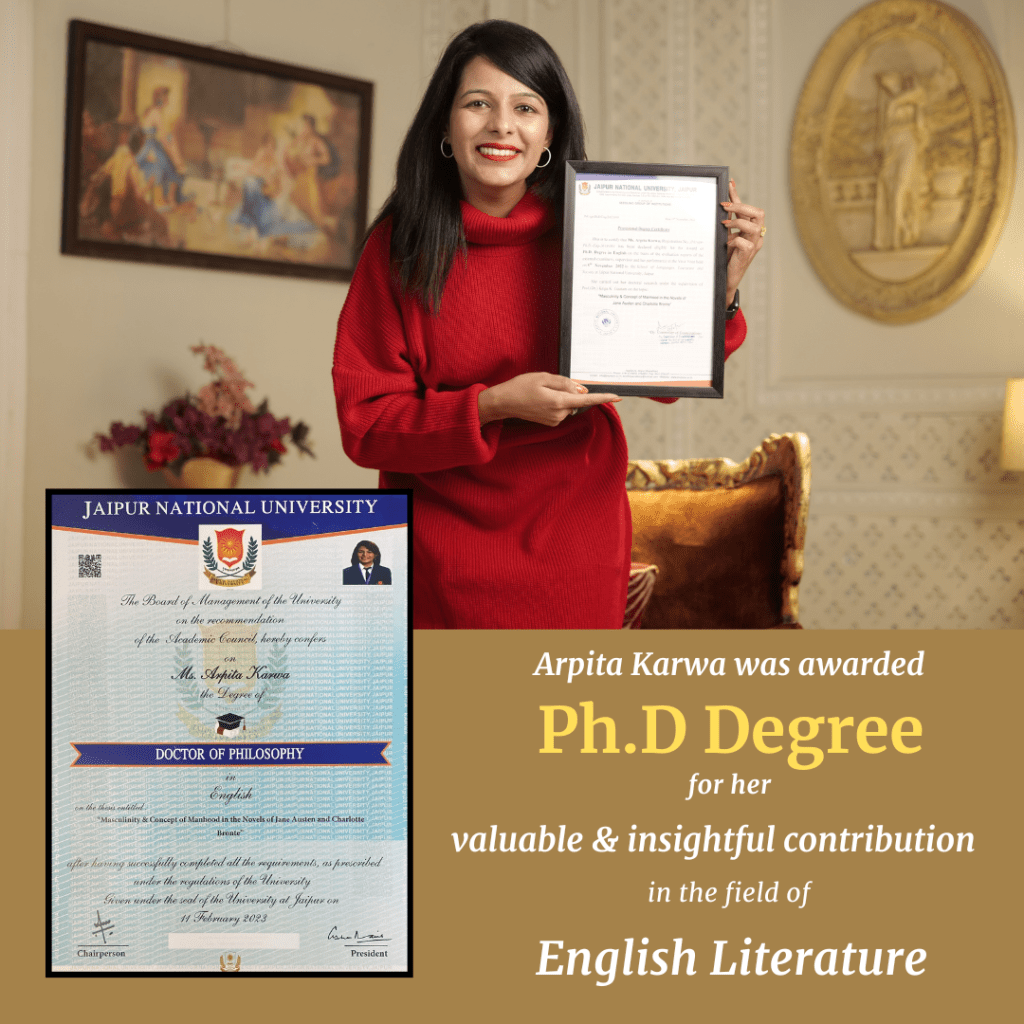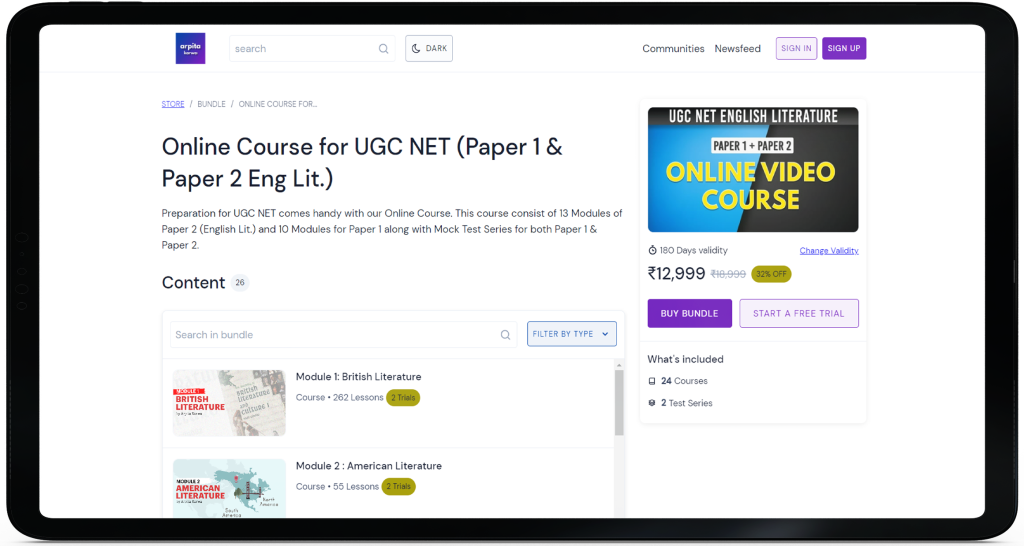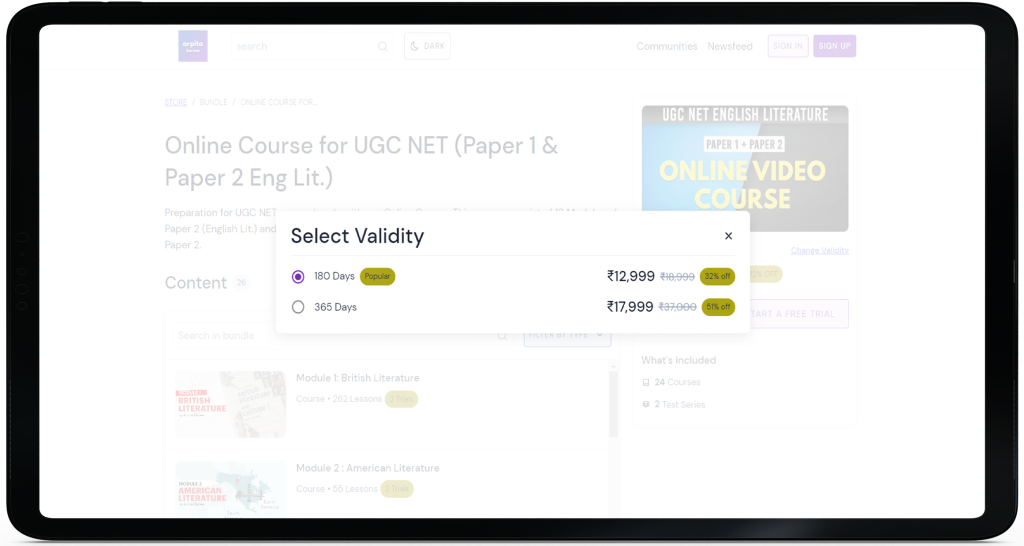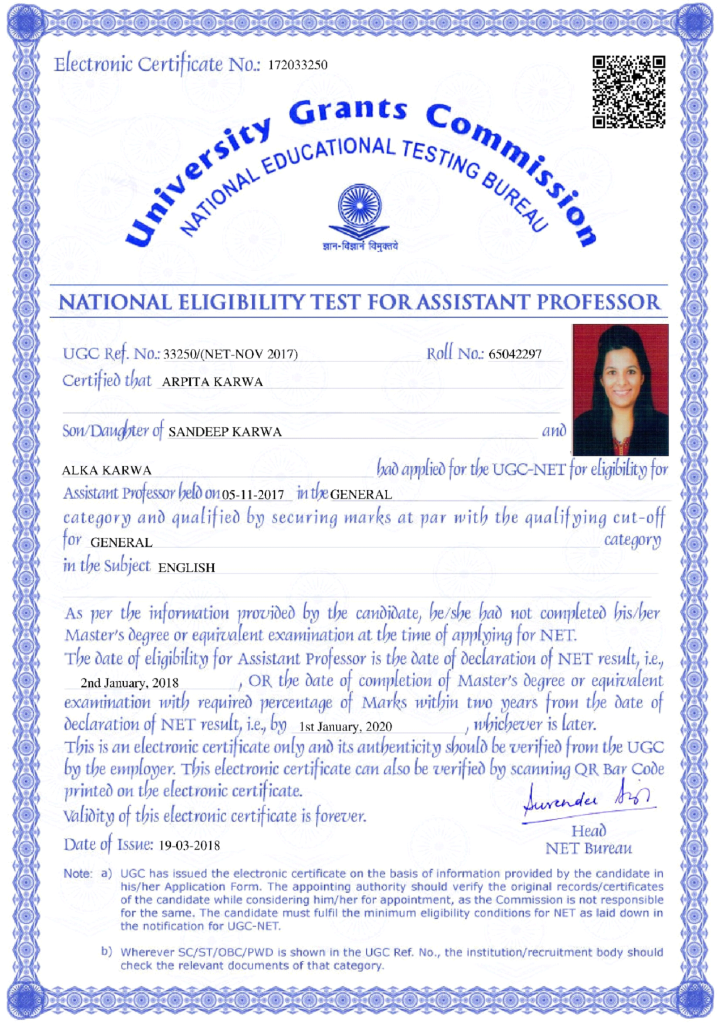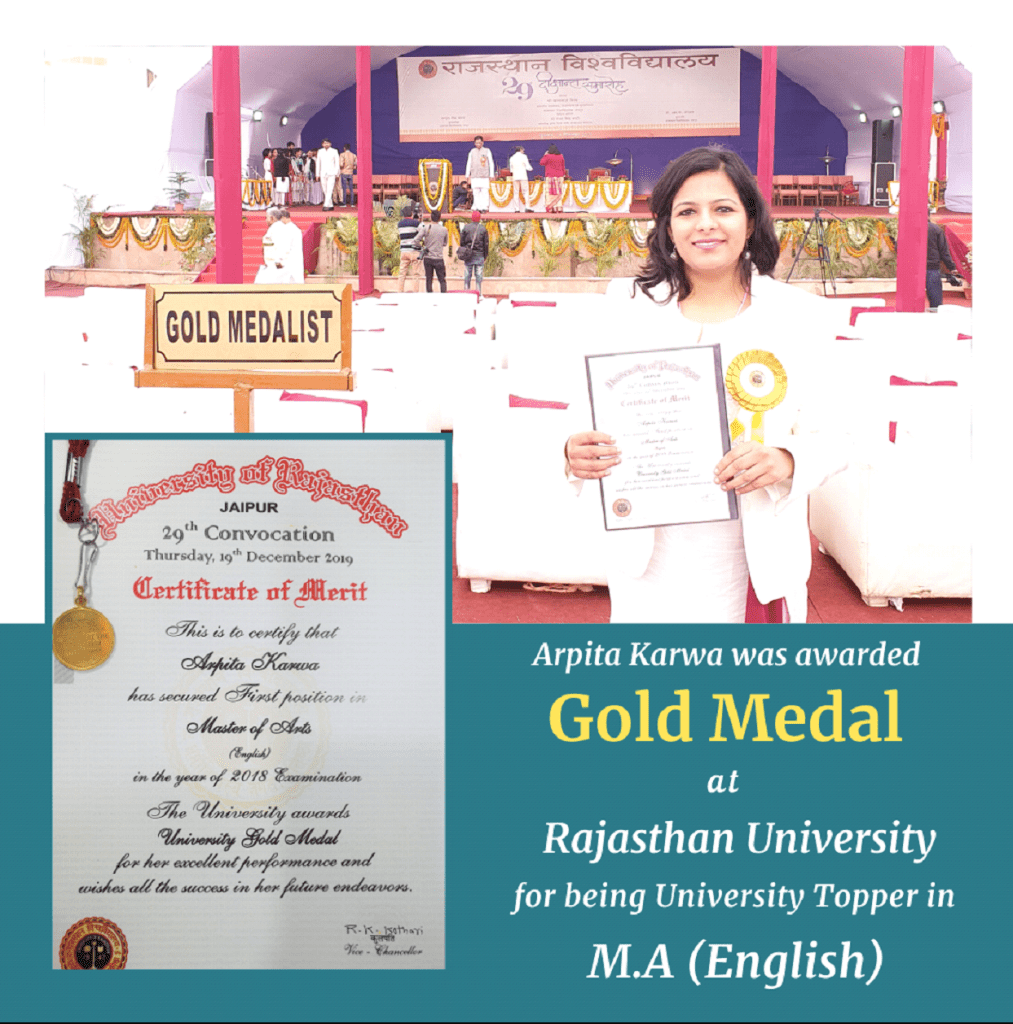Paper 2- September 2013
October 18, 2022 2023-12-07 13:11Paper 2- September 2013
1. In the following cluster of poems by Shelley, which one has the voyage motif?
(A) “Adonais”
(B) The Revolt of Islam
(C) “Ode to the West Wind”
(D) Alastor
Answer: (D)
2. In Sydney’s sonnet sequence, Astrophil and Stella, the final sonnet (#108)
(A) Brings no resolution
(B) Ends in joy
(C) Brings a definite resolution
(D) Promises another sonnet sequence
Answer: (A)
3. Who among the following English writers opposed the Licensing Act of 1643?
(A) John Milton
(B) Thomas Browne
(C) Andrew Marvell
(D) Abraham Cowley
Answer: (A)
4. Who claimed: “I have not published a single paper that is not written in a spirit of benevolence and with a love of mankind”?
(A) Pope
(B) Dryden
(C) Swift
(D) Addison
Answer: (D)
5. A protagonist writes a letter of confession, but it gets lost under the carpet only to be found on the wedding day. Who is the protagonist?
(A) Bathsheba
(B) Lucetta
(C) Sue
(D) Tess
Answer: (D)
6. In an age of pressurized happiness, we sometimes grow insensitive to subtle joys. The italicised words are an example of
(A) A transferred epithet
(B) A simile
(C) A metaphor
(D) A hyperbaton
Answer: (A)
7. In Graham Greene’s Brighton Rock, Hale is murdered with the help of ‘brighton rock’ which is
(A) A kind of sugar-candy
(B) A form of grenade
(C) A baton
(D) A kind of rock
Answer: (A)
8. Which poet among this group does not belong to the ‘Auden Generation’ group of poets?
(A) Stephen Spender
(B) Alun Lewis
(C) Cecil Day Lewis
(D) Louis Macneice
Answer: (B)
9. In Lord of the Flies which character comes to realize that the ‘beast’ is actually the evil inside the boys themselves and it is that which is breaking things up?
(A) Jack
(B) Simon
(C) Roger
(D) Ralph
Answer: (B)
10. Which text exemplifies the anti- Victorian feeling prevalent in the early twentieth century?
I. Eminent Victorians
II. Jungle Book
III. Philistine Victorians
IV. The Way of All Flesh
The correct combination according to the code is
(A) II and IV are correct.
(B) I and IV are correct.
(C) III and IV are correct.
(D) II and III are correct.
Answer: (B)
11. What event allowed mainstream British theatre companies to commission and performs work that was politically, socially and sexually controversial without fear of censorship?
(A) The abolition of the Lord Chamberlain’s office in 1968.
(B) The illegal performance of works by Howard Brenton and Edward Bond.
(C) The collapse of liberal humanist consensus in the late 1960s.
(D) A combined appeal to the Queen by a group of London dramatists.
Answer: (A)
12. The Wife of Bath’s philosophy ofmarriage shows that she
(A) Is a strong person with keen awareness of her own rights?
(B) Tends to say one thing and do the opposite.
(C) Cares only for pleasure, not for right and wrong.
(D) Trusts thought too much instead of feeling.
Answer: (A)
13. Which of the following characters is killed in Achebe’s Things Fall Apart in conformity with an African tribal custom?
(A) Okonkwo
(B) Obierika
(C) Ikemefuna
(D) Nwoye
Answer: (C)
14. “We will do it, I tell you; we will do it.” The repetition of a phrase is
(A) Antiphrasis
(B) Diacope
(C) Aposiopesis
(D) Enumeratio
Answer: (B)
15. Find the poet who is the odd one in the group:
(A) Wallace Stevens
(B) Robert Lowell
(C) Sylvia Plath
(D) Anne Sexton
Answer: (A)
16. Which one of the following characters in Shakespeare’s Tempest is associated with the Earth?
(A) Ferdinand
(B) Ariel
(C) Caliban
(D) Prospero
Answer: (C)
17. In the Advancement of Learning Bacon attempted a preliminary survey of the entire field of learning, by analyzing the principal obstacles to its advancement. Identify from among the following choice the one that he did not mention as an obstacle:
(A) Rhetoric
(B) Medieval scholasticism
(C) Inductive method
(D) Pseudo sciences
Answer: (C)
18. Who among this group of youngmale characters in Jane Austen’snovels is not sent to the University for Education?
(A) Tom Bertram
(B) John Thorpe
(C) James Morland
(D) Henry Tilney
Answer: D
19. Charles Dickens caricatured utilitarian thinking with telling directness in his portrayal of
(A) Paul Dombey
(B) Thomas Gradgrind
(C) Philip Pirrip
(D) Harold Skimpole
Answer: (B)
20. Which one of the following playwrights will not be covered under the category / term ‘Theatre of the Absurd’?
(A) Jean Genet
(B) Jean Giraudoux
(C) Samuel Beckett
(D) Eugene Ionesco
Answer: (B)
21. The following are two lists of lines from poems and their titles. Match them:
(Lines from poems)
I. “The squat pen rests as snug as a gun.”
II. “A serious house on serious earth it is.”
III. “Time held me green and dying.”
IV. “I hold creation in my foot.”
(Titles of poems)
1. “Church Going”
2. “Hawk- Roosting”
3. “Digging”
4. “Fern Hill”
Which is the correct combination according to the above code?
I II III IV
(A) 4 1 2 3
(B) 2 3 4 1
(C) 1 2 3 4
(D) 3 1 4 2
Answer: (D)
22. _________ is the use of words whose pronunciation imitates the sound the word describes.
(A) Alliteration
(B) Onomatopoeia
(C) Oxymoron
(D) Enthymeme
Answer: (B)
23. Arrange the following books in the order in which they appeared. Use the code given below:
I. The Dictionary of the English Language
II. The History of Rasselas
III. The Vanity of Human Wishes
IV. Lives of the English Poets
Which is the correct combination according to the above code?
(A) III, I, II, IV
(B) I, II, III, IV
(C) IV, III, II, I
(D) II, III, I, IV
Answer: (A)
24. Arrange the following forms in the order in which they appeared. Use the code given below:
I. commedia dell’arte
II. Confessional poetry
III. Agitprop
IV. Picaresque novel
The correct combination is:
Code:
(A) IV, I, II, III
(B) I, IV, III, II
(C) II, IV, I, III
(D) I, III, IV, II
Answer: (B)
25. Which of the following poems deals with neighbourly relations?
(A) “Birches”
(B) “Home Burial”
(C) “Mending Wall”
(D) “Stopping by Woods on a Snowy Evening”
Answer: (C)
26. The following are two lists of writers and their works. Match them:
(Writers)
I. Katherine Susannah Prichard
II. Colin Johnson
III. Sally Morgan
IV. Jack Davis
(Works)
1. Barungin
2. My Place
3. Wild Cat Falling
4. Coonardoo
Which is the correct combination according to the above code?
I II III IV
(A) 3 2 1 4
(B) 4 3 2 1
(C) 2 1 4 3
(D) 1 4 3 2
Answer: (B)
27. How does John Stuart Mill define ‘happiness’?
(A) Doing what one wants to do
(B) Leading a fulfilling life
(C) Pleasure and the absence of pain
(D) Virtuous activity
Answer: (C)
28. “Had we but world enough, and time, this coyness, lady, were no crime … But at my back I always hear Time’s winged chariot hurrying near.” Andrew Marvell in these lines emphasizes the theme of
(A) Love
(B) Love and transience
(C) Love and political passion
(D) Love and flattery
Answer: (B)
29. The following are two lists of dramatists and their plays. Match them:
(Dramatists)
I. George Etheredge
II. William Wycherley
III. John Vanbrugh
IV. William Congreve
(Plays)
1. The Country Wife
2. The Man of Mode
3. The Double Dealer
4. The Provok’d Wife
The correct combination is:
I II III IV
(A) 2 3 4 1
(B) 3 2 1 4
(C) 4 3 2 1
(D) 2 1 4 3
Answer: (D)
30. The following are two lists of writers and their works. Match them:
(Works)
1. Drums of My Flesh
2. Trishanku
3. Jasmine
4. Anil’s Ghost
(Writers)
I. Uma Parameswaran
II. Bharati Mukherjee
III. Michael Ondaatje
IV. Cyril Dabydeen
Which is the correct combination according to the above code?
I II III IV
(A) 1 3 2 4
(B) 3 4 1 2
(C) 2 3 4 1
(D) 4 1 3 2
Answer: (C)
31. Dryden’s dramatization of Paradise Lost is entitled
(A) All for Love
(B) The State of Innocence
(C) Annus Mirabilis
(D) Religio Medici
Answer: (B)
32. Two pioneering feminist tracts, Kate Millet’s Sexual Politics and Germaine Greer’s The Female Eunuch were published in
(A) 1969
(B) 1968
(C) 1970
(D) 1967
Answer: (C)
33. Who defined poetry as ‘the best words in the best order’?
(A) Wordsworth
(B) Coleridge
(C) Keats
(D) Shelley
Answer: (B)
34. What did Thomas Carlyle mean by “Close thy Byron; open thy Goethe”?
(A) Britain’s pre-eminence as a global power will depend on mastery of foreign languages.
(B) Abandon the introspection of the Romantics and turn to the higher moral purpose found in Goethe.
(C) Even a foreign author is better than a home-grown scoundrel.
(D) Leave England and immigrate to Germany.
Answer: (B)
35. Conrad’s Heart of Darkness presents two conflicting discourses present in his own culture. Identify the two discourses from the following:
(A) Modernism and anticolonialism
(B) Modernism and structuralism
(C) Anti-colonialism and Eurocentricism
(D) Material culturalism and tribalism
Answer: (C)
36. Who among the following poets defined free verse as playing tennis without a net?
(A) Robert Frost
(B) Ezra Pound
(C) Philip Larkin
(D) William Carlos Williams
Answer: (A)
37. Christopher Marlowe wrote all the following plays except
(A) Tamburlaine the Great
(B) The Jew of Malta
(C) Richard III
(D) Edward II
Answer: (C)
38. According to Barthes, a text which draws attention to its artifice, to the ways in which it is structured, is called
(A) Writerly text
(B) Aesthetic text
(C) Readerly text
(D) Formal text
Answer: (A)
39. Which of the following descriptions is not applicable to Pope’s The Rape of the Lock?
(A) A mock heroic poem
(B) Written in heroic couplets
(C) Pope’s tribute to Queen Anne
(D) Produced in two versions, consisting of 2 and 5 cantos
Answer: (C)
40. From the following list, choose the work which is not written by E.M. Forster:
(A) Where Angels Fear to Tread
(B) Maurice
(C) A Room of One’s Own
(D) The Longest Journey
Answer: (C)
41. The ‘Vulgate Bible’ was prepared to make the Bible available to
(A) The ecclesiastics
(B) The elite class
(C) The courtiers
(D) The common men
Answer: (D)
42. Literary works such as Charles Dickens’s David Copperfield, Samuel Butler’s The Way of All Flesh and James Joyce’s A Portrait of the Artist as a Young Man provide examples of which following novelistic form?
(A) Nouveau roman or new novel
(B) Epistolary novel
(C) Bildugsroman
(D) Historical novel
Answer: (C)
43. “I fall upon the thorns of life! I bleed!” expresses a pathetic cry of a wounded heart from “Ode to the West Wind” by Shelley. The poem consists of
(A) Fourteen line terzarima stanzas
(B) four-lined stanza characterized by swift action
(C) A particular rhyme scheme in a villanelle
(D) An unstressed syllable followed by a stressed one
Answer: (A)
44. In the Fall of Hyperion Keats’s Muse figure is
(A) Thea
(B) Moneta
(C) Lamia
(D) Calliope
Answer: (B)
45. What literary work best captures a sense of the political turmoil particularly regarding the issue of religion just after the Restoration?
(A) Gay’s Beggar’s Opera
(B) Butler’s Hudibras
(C) Pope’s Dunciad
(D) Dryden’s Absalom and Achitophel
Answer: (D)
46. Who among the Victorian authors has described himself/herself as an agnostic?
(A) Matthew Arnold
(B) Charles Dickens
(C) George Eliot
(D) Thomas Hardy
Answer: (C)
47. Preface to Frantz Fanon’s The Wretched of the Earth was written by
(A) AimeCesaire
(B) AniaLoomba
(C) Jean Paul Sartre
(D) Edward Said
Answer: (C)
48. Who among the following theorists formulated the concept of the utile dulci, profit combined with delight?
(A) Plato
(B) Aristotle
(C) Horace
(D) Longinus
Answer: (C)
49. Out of the four humours of the body, the Jacobeans thought of themselves as especially prone to
(A) Choler
(B) Blood
(C) Phlegm
(D) Melancholy
Answer: (D)
50. Who among the following Romantic poets ended his life, lauded and respected as ‘The Sage of High gate’?
(A) William Blake
(B) S.T. Coleridge
(C) P.B. Shelley
(D) William Wordsworth
Answer: (B)







